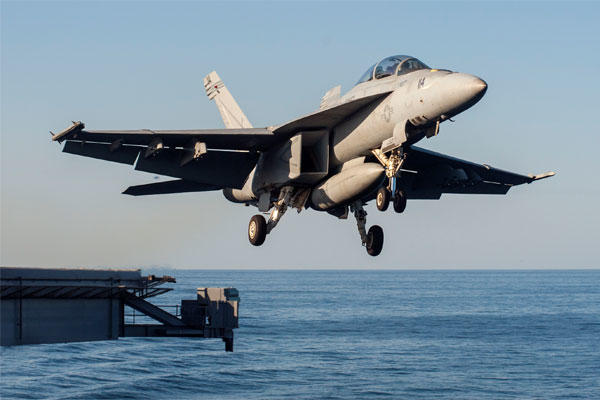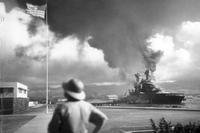NAVAL AIR STATION PATUXENT RIVER, Md. -- The F/A-18 Hornet community celebrated the 35th anniversary of the aircraft's first flight during a ceremony Dec. 9 in the Rear Adm. William A. Moffett building atrium at Naval Air Station Patuxent River, Md.
Sponsored by the F/A-18 and EA-18G Program Office (PMA-265), the celebration highlighted the accomplishments and continued impact of the U.S. Navy's longest running tactical aircraft program.
"The F/A-18 and EA-18G program continues to thrive, it is by far the predominant tactical force for naval aviation," said Capt. Frank Morley, PMA-265 program manager, "and it will continue to be for many years to come."
Originally designed to replace the F-4 Phantom and the A-7 Corsair II, the F/A-18 Hornet took its first flight Nov. 18, 1978. Today, the F/A-18 platform, including the Hornet, Super Hornet and EA-18G Growler, operate in 44 Navy and 11 Marine Corps Strike Fighter and Electronic Attack Squadrons worldwide.
Since its maiden voyage 35 years ago, the F/A-18 family of aircraft has flown 8,692,167 flight hours averaging nearly 250,000 flights hours per year since the historic journey.
"The success of this program rests on the shoulders of many that have come before us, and many that have spent a lifetime supporting this program," Morley said during the ceremony.
The ceremony's keynote speaker, retired Vice Adm. Jeffrey A. Wieringa, shared a number of "sea" stories based on his experience as a past program manager (April 2000 to May 2003).
"I became a naval aviator in 1977 - just one year before the Hornet entered into service," said Wieringa. "So, you could say that both the F/A-18 and I earned our wings right about the same time."
Rear Adm. Donald (B.D.) Gaddis, Program Executive Officer for Tactical Aircraft Programs (PEO(T)), also shared thoughts about his time as PMA-265's program manager and what he believes has made the F/A-18 and EA-18G program so successful.
"We have always had very, very good leadership inside the Hornet industry team, PMA-265 and in the competencies," said Gaddis. "That successful culture is going to keep us flying as a team until probably 2030 or 2035."
The ceremony was followed by a luncheon and tours of Hangar 201, home of Air Test and Evaluation Squadron (VX) 23. Four static aircraft displays were on exhibition, each representing an iteration of the F/A-18. Boeing also provided guests the opportunity to "fly" the F/A-18 Super Hornet via its mobile simulator.
For more information about the F/A-18 Hornet, Super Hornet and EA-8G Growler, visit the Naval Air Systems Command (NAVAIR) website.
Editor's note: Flight hours as of Sept. 1, 2013, average flight hours determined by number of years and total flight hours since 1978.


























